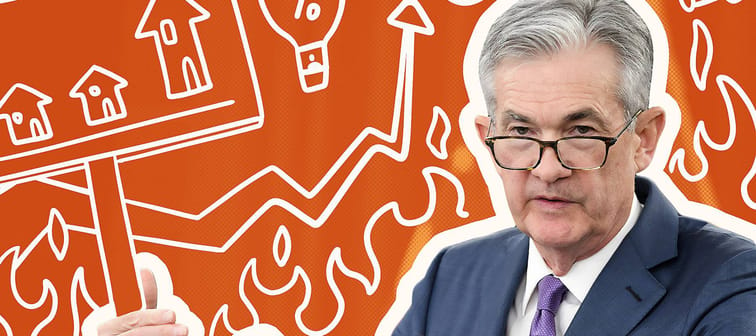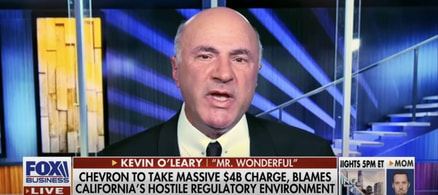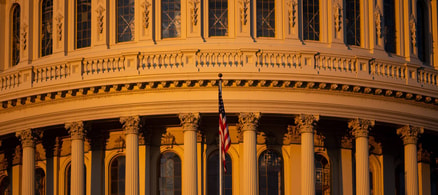Why the Federal Reserve needs to raise rates
The economy has become so overheated that something has to give.
Prices on everything from bananas to big-screen TVs are rising unsustainably, thanks in part to supply-chain bottlenecks that have lasted longer than anticipated along with the geopolitical crisis in Ukraine.
“The surge in prices of crude oil and other commodities that resulted from Russia’s invasion in Ukraine is boosting prices for gasoline and food, and that is creating additional upward pressure on inflation,” Powell says. “COVID-related lockdowns in China are likely to exacerbate supply-chain disruptions.”
Meanwhile, businesses can’t find enough workers to fill job openings. There are still almost two jobs available for every person who’s looking for one.
The federal funds rate is a key tool for cooling things off. Also known as the “target for the overnight rate,” it’s the interest rate banks charge each other for overnight loans so they can meet their requirements for cash on hand.
When banks pay more to borrow, they pass on those costs to their customers, reducing demand.
It’s all part of the central bank’s so-called dual mandate, which aims for maximum employment and stable prices. Maximum employment, also known as full employment, is an idealized state when everyone who wants a job can get one — without wages and inflation spiraling out of control.
The Fed’s goal is to keep inflation at around 2% without triggering a recession — a fate Powell hopes to avoid, even with the oversized hike..
“The American economy is very strong and well positioned to handle tighter monetary policy,” he says.
More: Are mortgage rates tied to 10 year treasury?
Meet Your Retirement Goals Effortlessly
The road to retirement may seem long, but with WiserAdvisor, you can find a trusted partner to guide you every step of the way
WiserAdvisor matches you with vetted financial advisors that offer personalized advice to help you to make the right choices, invest wisely, and secure the retirement you've always dreamed of. Start planning early, and get your retirement mapped out today.
Get StartedWhat would happen if the Fed kept rates low forever?
If the Fed were to keep rates depressed, credit would stay highly accessible and inexpensive, encouraging Americans to continue spending.
It would result in “a whole lot of cash bidding up prices over very few and scarce goods,” says Ken Johnson, an associate dean and professor of finance at Florida Atlantic University.
“If we kept interest rates low permanently, it would probably lead to hyperinflation unlike we have perhaps ever seen ever in the U.S.”
Hyperinflation is generally thought of as a period where the inflation rate goes up more than 50%.
Keeping rates low would also mean that owners of all sorts of financial assets — stocks, bonds, houses, etc. — would benefit at the expense of others.
“Those things, as you drive down the rates, their value actually goes up,” Johnson says. “So if I’m holding a huge portfolio of houses — say I’m a landlord — and you keep rates artificially low, it’s just going to increase the value of all my properties.”
“You get this flow of wealth from low rates into the class that has a lot of financial wealth. It doesn’t get distributed evenly.”
Is the Fed doing enough?
The Fed made its first rate hike in more than three years in March, when it raised the federal funds rate by a modest quarter-point.
That wasn’t enough, however, to slow down the economy, which at that point was experiencing record-high inflation of 8.5%.
Last week’s Consumer Price Index update showed prices in May were up 8.6% compared to the same month the year before — the highest annual increase since December 1981.
Prices for gas, housing and food experienced the biggest increases.
“The typical family must spend about $450 per month more to buy the same goods and services they did a year ago,” Mark Zandi, senior economist at Moody’s Analytics, tweeted. “They make about $70k a year. Ugh!”
Some argue the Fed shouldn’t have kept rates so low for so long and that it should have moved quicker to sell assets like mortgage-backed securities and 10-year Treasury bills — which it bought by the billions to keep rates down on longer-term loans like mortgages.
“No matter what they do, they’re going to be criticized for it,” Johnson says. “So they have to pick a course and stick to it.”
Stop overpaying for home insurance
Home insurance is an essential expense – one that can often be pricey. You can lower your monthly recurring expenses by finding a more economical alternative for home insurance.
SmartFinancial can help you do just that. SmartFinancial’s online marketplace of vetted home insurance providers allows you to quickly shop around for rates from the country’s top insurance companies, and ensure you’re paying the lowest price possible for your home insurance.
Explore better ratesHow fast is too fast?
While Powell says Americans should expect additional rate increases, their size and speed will depend on data and the evolving economic outlook. The July meeting, however, could look a lot like Wednesday’s.
“The next meeting could well be about a decision between 50 and 75,” Powell says, referring to a half- or three-quarter point increase.
One member of the central bank's decision-making committee voted against a 0.75% hike for June, preferring to raise the target for the federal funds rate by half a percentage point.
Some analysts expected the Fed would remain steady and also raise rates a half-percentage point at its next two meetings in July and September. Others feared that could still be too much, too fast, pushing the economy into a recession.
“We remain optimistic about near-term growth and we also think inflation will be sticky given ongoing geopolitical strife, supply chain issues and labor market shortages,” ING economists write.
Steven Rattner, a Wall Street executive who has been critical of the Fed’s cautious approach, approved of Wednesday’s rate hike, noting that a three-quarter point increase ties for the central bank’s largest increase since the early 1980s.
“But a big move is necessary: We also have the highest inflation since the early '80s,” he tweeted.
Sponsored
Follow These Steps if you Want to Retire Early
Secure your financial future with a tailored plan to maximize investments, navigate taxes, and retire comfortably.
Zoe Financial is an online platform that can match you with a network of vetted fiduciary advisors who are evaluated based on their credentials, education, experience, and pricing. The best part? - there is no fee to find an advisor.







